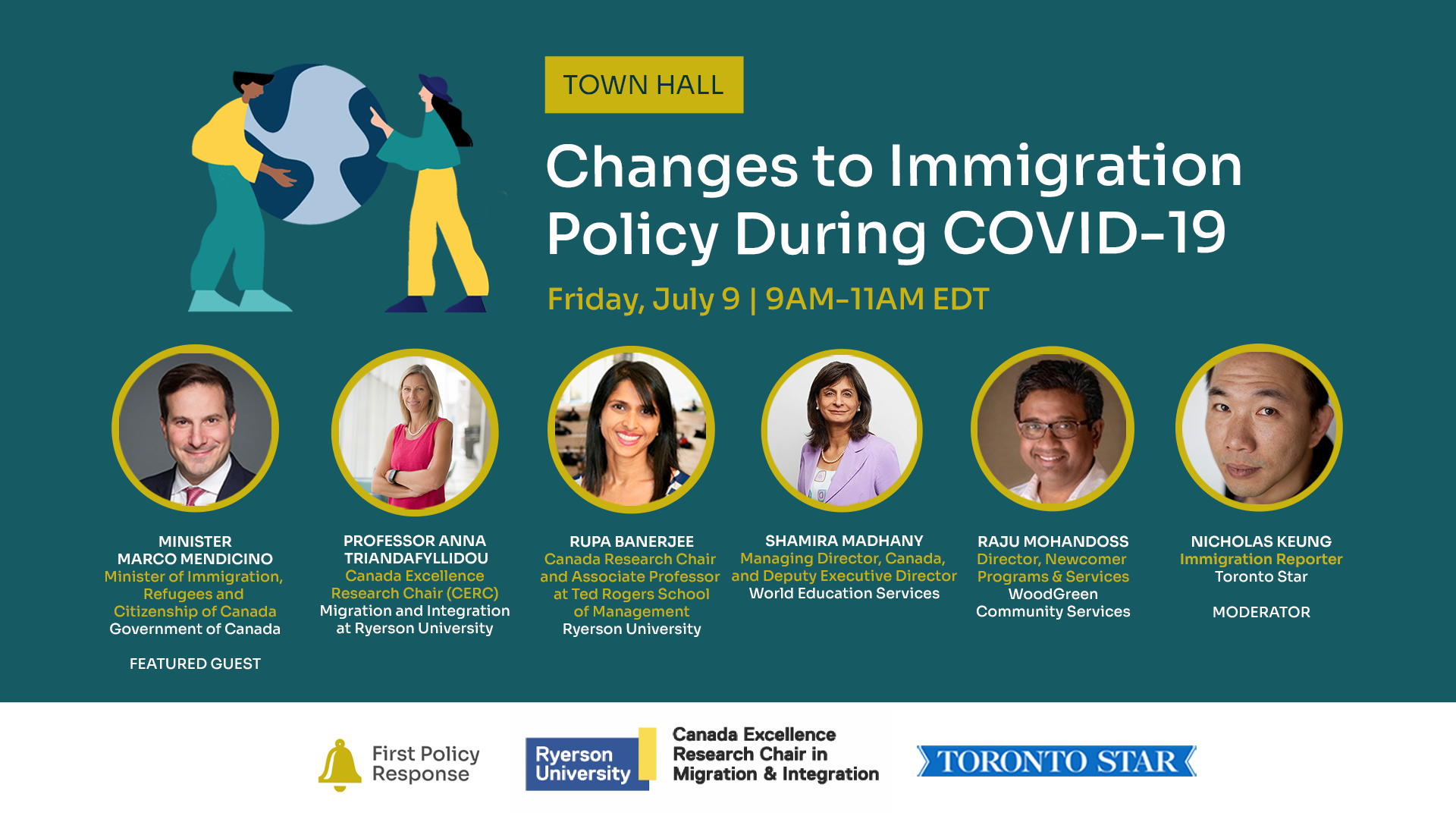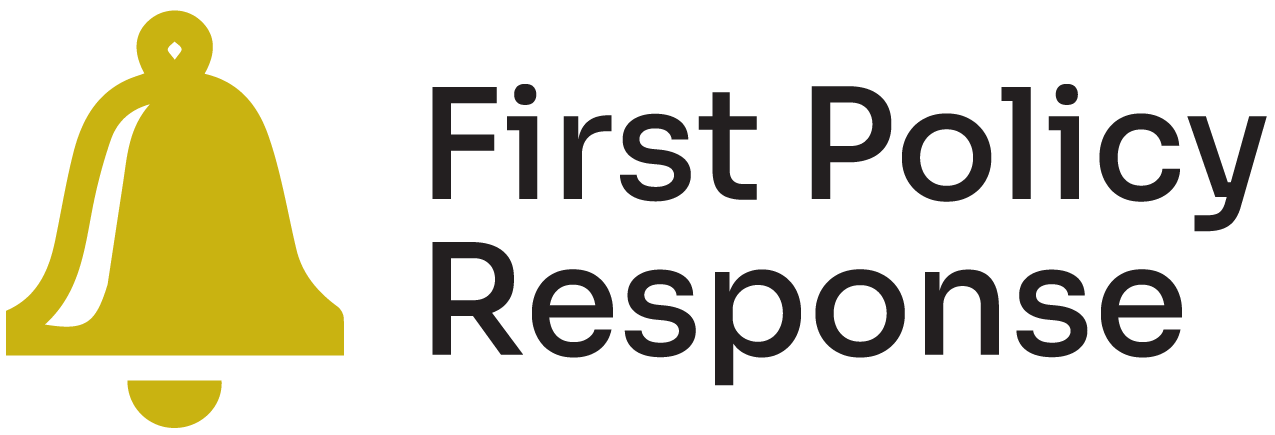
The COVID-19 pandemic exposed several systemic challenges and gaps within Canada’s immigration system. But it also led to important policy shifts. Flexibility with work permit extensions was introduced, along with new pathways to permanent residency (PR) for temporary foreign workers, front-line workers and international students. This First Policy Response Video Town Hall facilitated important dialogue around the challenges, successes and innovations in the immigration system during the pandemic.
The conversation was moderated by Nicholas Keung, immigration reporter for the Toronto Star, who was joined for an opening interview with Immigration Minister Marco Mendicino. The panel included:
- Anna Triandafyllidou, Canada Excellence Research Chair (CERC) in Migration and Integration, Ryerson University
- Rupa Banerjee, Canada Research Chair and Associate Professor Human Resource Management/Organizational Behaviour Dimensions Chair, Ted Rogers School of Management, Ryerson University
- Shamira Madhany, Managing Director, Canada, and Deputy Executive Director, World Education Services
- Mohan Doss, Director, Newcomer Programs and Services, WoodGreen Community Services
Mendicino listed three ways in which the federal government managed to rethink the immigration system during the pandemic. The first was by writing new laws and policies that authorized entry into Canada, while also abiding by public health and safety protocols. This was challenging as the government had to create new, innovative policies and platforms without a framework to follow. Mendicino said this offers lessons for future crises, as we will need to implement efficient protocols.
The second pandemic-related change Mendicino listed was digitizing some immigration processes, such as citizenship, and the third was creating pathways to PR for essential domestic temporary foreign workers.
In response to the minister’s points around digitizing immigration processes, panellists said the government needs to make sure it doesn’t increase barriers for newcomers and applicants who come from countries that are less technologically advanced. Further, immigration should not solely be focused on meeting numbers and having newcomers fill any possible job, but it should be about them coming to Canada to utilize their foreign skills and experiences.
The government invited more than 27,000 candidates in the Express Entry applicant pool in mid-February, drastically reducing the number of “points” they required for PR. Triandafyllidou said this allowed Canada to make progress toward its goal of 400,000 migrants for 2021, which would be otherwise difficult to meet due to the pandemic. It also invites us to reconsider the points system’s focus on “high skills,” she said, noting that Canada also needs individuals in “lower-skill” industries such as construction, agriculture, personal care services and trades.
Similarly, Banerjee said that when Canada introduced a new pathway to PR for more than 90,000 applicants, nearly half of those spots went to international graduates of Canadian colleges and universities. However, labour market demands show that Canada also needs a stable allocation of lower-skilled workers. All panelists agreed that they should receive pathways to apply for PR. It was also noted that temporary foreign workers should be made eligible for settlement services, to ensure they are integrated by the time they can apply for PR.
Madhany noted that immigrants face underemployment, low wages and poor recognition of their skills and experiences, which leads to a stark immigrant wage gap. By not enabling immigrants to contribute to their full economic potential, Canada takes a large hit to its GDP as the economy loses out on valuable experiences and skills. To address these issues, she said, Canada needs a national strategy to enhance immigrant labour-market integration through an inclusive economic recovery, and innovative tools and approaches for skills assessment.
On the issue of integration, Doss said investments are needed to expand, innovate and improve settlement services to ensure they have the capacity to support newcomers. These services have faced many obstacles in creating a virtual service model during the pandemic due to limited resources. Additionally, many newcomers lack digital literacy skills or access to reliable internet or devices.
The panellists agreed that a two-tiered immigration system is a logical pathway to PR that can be used to support temporary workers. Through a temporary permit, migrants have the opportunity to gain Canadian experience and networks which are valued by employers. Further, this will give Canada more channels for immigration that supports labour market demands. At the same time, panellists cautioned that immigration based on occupations should be avoided as it has historically been unsuccessful. It is more effective to assess potential immigrants based on general human capital, which broadly evaluates both hard and soft skills.




